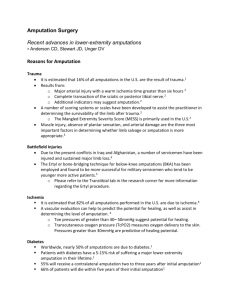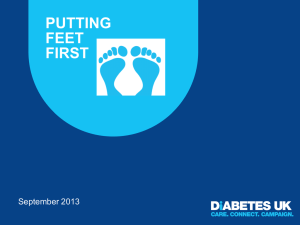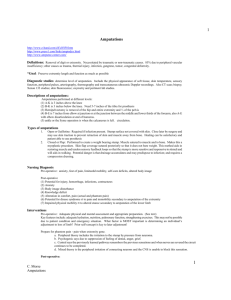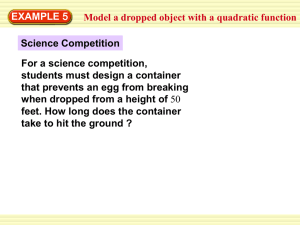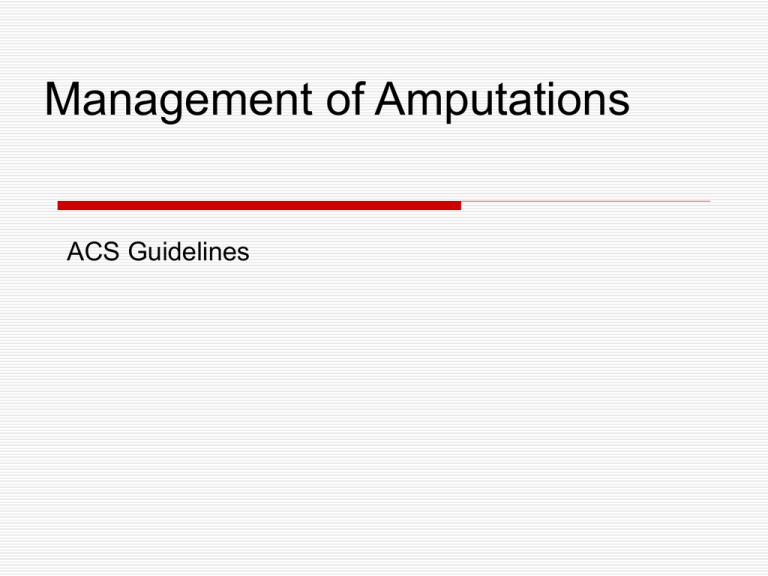
Management of Amputations
ACS Guidelines
Patient Selection
Patients with amputations of the following are all
potential candidates for reimplantation:
Scalp
Hand or Foot
Arm or Leg
Fingers or Toes
Penis
Examples of Amputations
Before: Amputation at wrist
After: Re-implantation
Examples of Amputations
Amputated Nose
Examples of Amputations
Re-implanted Nose
Strong Indications for Reimplantation
Clean Guillotine Amputation
Amputation through the Middle Phalanx of Digit
Bilateral Amputations of Hand
Multiple Digit Amputations
Thumb Amputations
Contraindications to Reimplantation
Severe crushing injury
Avulsion
Multiple level amputations of same extremity
Initial Care of the Patient
Examine for other injuries-Trauma ABCDEs
Direct pressure to control hemorrhage
Splint digit in physiologic position
Gentle exam of proximal stump ok, but cleaning
and debridement should occur in operating room.
Preservation of the Amputated Parts
Clean of surface dirt by gentle rinse with lactated
ringers solution.
Wrap the parts in sterile gauze moistened with lactated
ringers.
Place in a sealable plastic bag or water proof container
Place bag or container in an outer container filled with
crushed ice.
Always label the container and transport with the
patient.
Do's and Don'ts
Never freeze the amputated part by putting in
direct contact with ice.
Never macerate the amputated part by soaking
it in water.
Don't try to debride the amputated part.
Place bag or container in an outer container
filled with crushed ice.
Communicate with Medical Control
Amputations are either complete or incomplete
(partial).
A. Complete amputation- there are no tissue,
ligament, muscle or other human tissue connecting
the amputated part to the body.
B. Partial/Incomplete amputation- any human tissue
such as a ligament, tendon or muscle connects the
body and the amputated part. In a partial amputation,
every effort should be made to preserve this
connection.
Remember the ABCDEs of Trauma
In the heat of the moment it is easy to forget the
ABC's of trauma management and focus on the
amputated part.
Take a moment to do the ABCs, assess vital signs
and assess for other injuries.
Even if the amputation is the only injury, you will
only know the patient is in hemorrhagic shock
from assessing the vital signs and other things like
skin signs, mentation, etc.
Time is the enemy to success
The longer it takes to get the patient and the part
to an institution with an experienced
reimplantation team the less likely the operation
will be successful.
Immediate cooling decreases tissue death and
bacterial growth.
The larger the amputated part the shorter the
amount of time it takes for tissue death to start.


